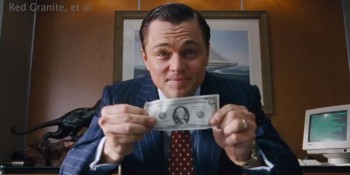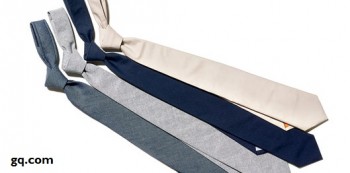In the temperate climates of the Northern Hemisphere, spring has arrived. Those of us in the northeastern quadrant of the United States are still stuffing ourselves into winter coats, but the weather is sure to change eventually. When it does, the gentleman must also change his wardrobe to reflect the season.
Winter evokes darkness, heaviness, seriousness: tweed and pipes and leather bound books and rich mahogany. In spring, the gentleman throws off this weight. Spring and fall are the best times for men’s fashion. The variable and mild temperatures allow for a diversity in clothing options. Fall is all about preparing for winter, with darker earth tones and heavier fabrics, but the buzzword of spring is “light.” Everything about the gentleman’s spring appearance should hew to this theme.
Begin by packing away the chunky sweaters and wool overcoats. But don’t just venture out into 50-degree weather as if it were mid-July. Embrace a leather (or faux leather) jacket, or a slick-looking track-style zip-up. When April showers hit, grab a classic trench or harness backwoods garment technology in an urban-styled raincoat. Furthermore, no modern urban gentleman should subject himself to the rain without a manly umbrella.
At the office and high-class dinner parties, lighten up your suit as well. The Modern Urban Gentleman has covered suits extensively already, but remember a few key points. Spring is the time to wear brighter colors, so put away the blacks, navies, and dark grays; opt for light grays, medium blues, and khaki. Be bold — but not overwhelming — in shirt and tie colors and patterns. Maybe this is the year you finally try a pink shirt.
When dressing more casual, jeans are vernally appropriate, but consider relying on chinos in washed-out hues. Classic khakis are still a staple, but make sure they have a modern fit, narrow through the leg — and, of course, no pleats.
The first half of spring is still brisk, so don’t jump straight into polo shirts. Keep wearing long sleeves, especially in waffle-knit fabrics, like Henleys. A blazer or a cardigan keep things warm without weighing you down. The trend in button-downs is for more ornate patterns; let your personal style be your guide, but remember not to overload the senses by mixing more than one statement piece.
The sun’s warming rays also bring out new options for footwear. The trend of the season is suede Oxfords in all colors. Go for it, but remember to check the weather report before heading out the door; rain can cause all sorts of trouble for the delicate leather (suede care to be covered at a later date). The chukka, or desert, boot was huge last year and will be popular this spring, too.
Sometime after Easter, lose the socks in less formal settings. Going sockless is a big deal, and the Modern Urban Gentleman will offer tips as the time draws near. In the meantime, during the early part of spring, swap out the brown and black stockings for pastels and jaunty designs.
Spring is a prefect time to invest in a new pair of sunglasses that you will try not to lose before Memorial Day. Aviators are a timeless classic, but consider pairing your shades to the shape of your face. Another accessory to consider is the fashion scarf. Don’t be afraid — be a confident modern urban gentleman! It’s very European.
Your spring awakening extends beyond the clothing. Consider trimming some of the winter growth from both your head and your face. The next time you visit the barber, ask about trying a toned-down version of the Macklemore; you’ve seen it recently on Brad Pitt, David Beckham, and Justin Timberlake.
Winter is a great time to sport a mountain man beard (if your wife will allow it), and we saw plenty of them during awards season this year. But spring calls for cultivated stubble instead of wild tangles. Pick up a beard trimmer, take it in tight — and get rid of the stuff on your neck altogether.
If you are a cologne-wearing gentleman, it’s time to mix up the scent. As GQ tells us today, go for something lighter, more green or fruity, to match nature’s bounty.
The modern urban gentleman lifestyle is about more than clothing. So extend the “lighten up” philosophy to everything you do: supplement your whiskey with gin, get outside and breathe the fresh air, laugh more. Spring is also a new beginning in so many ways. Seize this opportunity to learn some new skills, such as planting a garden to provide fresh, healthy food for your family.
Spring is a time of rebirth, and if you are ready to throw off the doldrums of winter, like the Modern Urban Gentleman certainly is, let that rebirth manifest in you as well.















